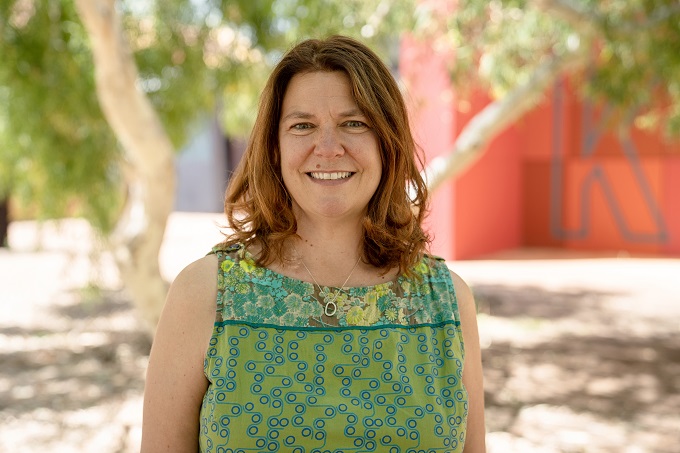
Dr Selena Fisk is a data expert and educational consultant who is passionate about helping teachers and schools sort through the numbers to tell the real stories and lead positive change. She fiercely advocates for a world in which we are all data-informed, not data-driven. Selena has mentored hundreds of school leaders, data leaders and teachers in data storytelling, which has positively impacted the students they work with. Here, she shares her tips for engaging students in their learning data.
Many data conversations in schools relate to the ways teachers use data on their learners to best support them and meet their needs. There is, however, another aspect to the use of data that goes beyond teacher use, that is, involving students in the process and in the conversations.
Read the latest edition of School News HERE
Involving students in their data story has the potential to positively shift their understanding of themselves as a learner and can aid the learning process. Data-informed learners:
- have a deeper understanding of their strengths
- are better able to articulate the specific areas they need to work on
- know the difference between their achievement and the progress they have made, and are more confident in talking about their progress and achievement
- have a better understanding of what is expected of them in the learning area or task
- are respectful of their peers’ strengths and weaknesses and positively support others
- encourage other teachers to engage with them at the same level in the use of data
While involving students with the data might be a useful aspiration or goal to have, it is important to recognise that it is not simple, and needs to be introduced carefully and deliberately. Teachers should aim to build students up to the point of being confident with the information they can access about themselves as learners, not fearful, intimidated, or negatively competitive. In fact, ‘neglecting to build a safe, skillful environment’ (Berger et a., 2014, p. 127) is one of the common challenges in using data with students. Teachers need to build a culture of psychological safety for students, and invite them into the process. For that reason, there are a number of dos and don’ts that I recommend teachers consider both prior to, and during the engagement of students with their data.

Prior to having the conversation, it is worth thinking about how you can:
- Explain why and how students will benefit from the conversation about their data and how it will help them as learners.
- Show students that you genuinely believe in the benefits of the data-informed conversation – if you’re not convinced, they won’t be either.
- Acknowledge the limitations of the data – talk about what information it does and does not provide and recognise that it only ever reflects a small piece of who they are.
- Recognise and make it explicit to students that they all differ in skills, progress, and achievement – that is completely okay and normal.
- Acknowledge the potential discomfort for students – sometimes there will be data that students are not happy with, but there are always opportunities to learn and improve.
- Build students’ data literacy – ensure they understand the types of data you will be using, what it means, and what is ‘good’, ‘average’ and ‘low’. If students do not understand the metrics, they will not be able to interpret the values correctly, and therefore, not be able to use it accurately.
- Build students’ data visualisation skills – ensure they can read and interpret the visualisations and identify trends.
Prior to having the conversation, it is important that you:
- Don’t imply that the conversation is something that has to be done for compliance. Compliance does not authentically motivate adults or students, so this needs to be grounded in the positive impacts of student involvement.
- Don’t project negativity about the process – remember, students value what we value.
- Don’t single out individual students to highlight examples (unless you de-identify the data and are certain that it is not obvious who it belongs to). Wherever possible, begin with one-on-one conversations with students.
- Don’t show all student data to all students (without individual prior conversations, and/or without de-identifying it).
- Don’t assume students have good data literacy, visualisation or storytelling skills – help build these skills.
- Don’t expect students to be able to do all of this well the first time – it will take time and that is okay.

During any conversation or work with students and their data, it is worth thinking about how you can:
- Start slowly.
- Include multiple data sources and talk about looking for trends across triangulated information.
- Use values and digits that students can understand (where possible, use single digits – see Heath and Starr 2022).
- Encourage students to lead the conversation and encourage their curiosity.
- Focus on the data storytelling – ask students to unpack what they see and what it means for them.
- Focus on the learning behaviours and next steps that can lead to improvements in results.
- Detail goals and aspirations that have specific and achievable action points and next steps.
During any conversation or work with students and their data, ensure that you:
- Don’t go too fast.
- Don’t focus on summative assessment grades only (remember to triangulate across multiple data sets, including formative and diagnostic).
- Don’t use abstract numbers that students struggle to understand (for example, very large or very small numbers – see Heath and Starr 2022).
- Don’t dominate the conversation – encourage students to take the lead.
- Don’t tell students what they should be able to see or what they need to do – encourage them to identify insights and talk about things they are proud of.
- Don’t set goals that are of a similar ilk to ‘get a B+ in maths this semester’ (be specific about what they are aiming to achieve).
- Don’t allow students to set vague and broad goals without measurable process steps.
These dos and don’ts provide some suggestions as to how you can (and shouldn’t) approach these conversations and opportunities with students. I encourage you to reflect on what you might already be doing, and some of the things that you could work on the next time you want to engage students in their data story.
References
Berger, R, Rugen, L, Woodfin, L and Education, EL (2014), Leaders of Their Own Learning: Transforming Schools Through Student-Engaged Assessment, John Wiley & Sons.
Heath, C and Starr, K (2022), Making Numbers Count, Bantam Press.







